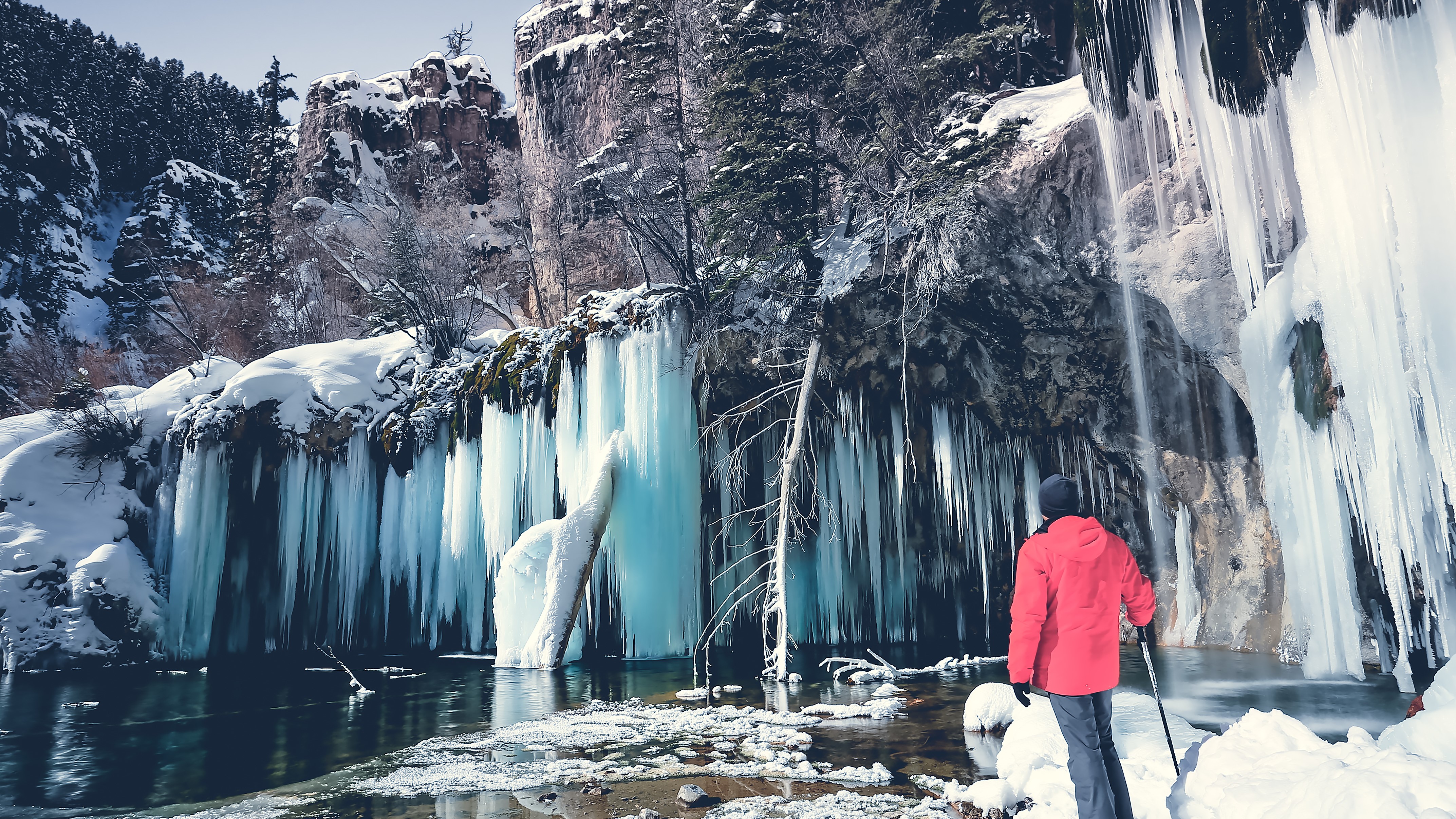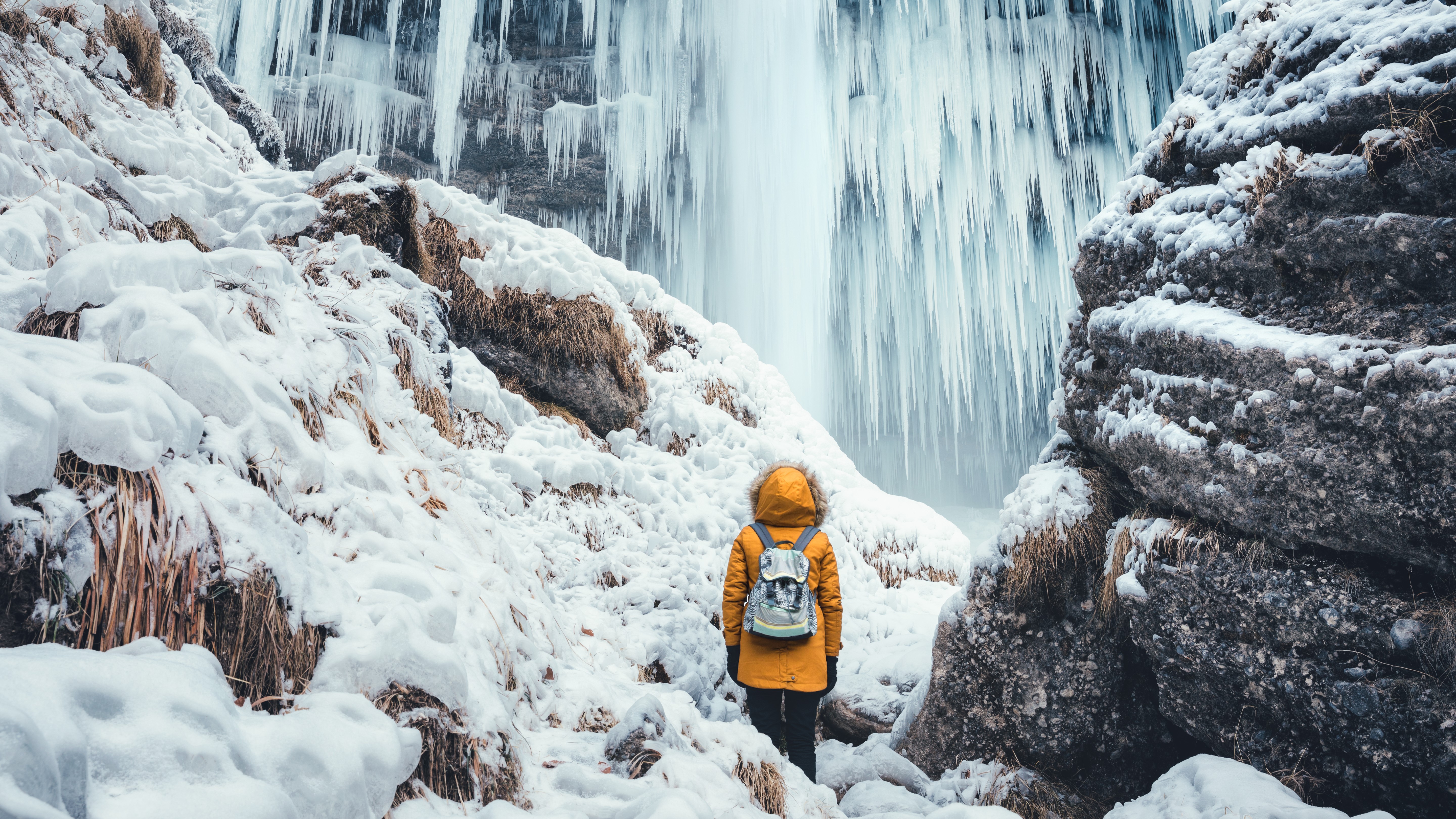
Could you be impaled by a falling icicle on a hike?
This is one of those random questions my boyfriend and I found ourselves pondering on the trail a couple of weeks ago upon encountering some ominously large ice daggers suspended from a wall of moss above us. These were of the type you see frequently in Colorado in winter, but seldom in the hills outside of Glasgow where we were.
Because we were standing a safe distance from the imposing structures and needed to catch our breath, I relayed the Grey’s Anatomy storyline where Christina gets impaled through the heart by an icicle after slipping and falling onto her back outside the hospital doors when the maintenance crew had neglected their ice-clearing duties. Fortunately, she was already at the hospital. But in real life, can these frozen spears could do you much harm? After all, those of us that hit the trails year-round do hike underneath a lot of them and spring is the time when they start dislodging.
The freeze-thaw cycle of spring means warming daytime temperatures but cold overnights, which results in icicles getting bigger, and that added weight plus instability increases their likelihood of snapping off. To be safe, we sidestepped the icicle zone and when I got home, I hit the internet to find out the answer to our question and was mildly alarmed to discover how many people out there want to know whether an icicle makes a good murder weapon. So if anyone from the FBI is reading this, you might want to follow up on a few of these queries.
Anyway, after hastily modifying my search to avoid jail time, I came across a scary statistic – multiple news agencies report that around 15 people in the US each year are killed by icicles, which is easily more than the number killed by bears, wolves or mountain lions, all of which we are generally much more afraid of. Upon closer inspection, however, I couldn’t find a reliable source for this statistic anywhere, even though agencies like AccuWeather circulate it, and even noted that some of these articles were generated using AI software, so I’m taking it with a grain of salt (there was a fatal icicle-spearing in Russia in 2019, however, so I won’t say that it’s impossible).

Ice safety
According to the Cleveland Clinic, icicles are rarely sharp enough to actually impale you (there goes the perfect murder weapon), but icicles and other ice structures hanging overhead on a hiking trail do pose some risk to hikers, especially in the spring, and that’s why mountain rescue teams on Mount Washington have been urging mountaineers to wear a helmet recently. Even if a falling icicle doesn’t impale you, it could definitely do some damage you won’t like, such as cutting your skin, giving you a concussion or breaking bones.
The threat of falling ice isn't merely theoretical. In January of this year, a hiker near Ogden, Utah was injured by a massive chunk of ice that broke off a waterfall she was admiring. Last year, a 41-year-old rock climber was killed by a block of ice that fell on her, also in Utah, and the year before, a hiker in Argentina was also killed by falling ice while entering a closed cave.
Walking underneath icicles and any icy structures always poses a risk, particularly during the spring thaw, and the best way to avoid getting hurt is to avoid these areas altogether. Observe trail closures due to icy conditions, even if it means you don't get as close to the cascades as you want to. Stay away from hiking alongside steep cliffs or underneath overhangs or trees where icicles gather and stick to open trails until the ice has melted. Stand well back when visiting icy waterfalls and if for some reason you find that you’re forced to walk under icicles, see if you can knock them off with your trekking pole before continuing.
Remember too that icy conditions overhead may also mean icy conditions on the ground, so carry winter traction devices in your backpack, and pull them on over your hiking boots before crossing any icy patches to avoid falling on a hike.







